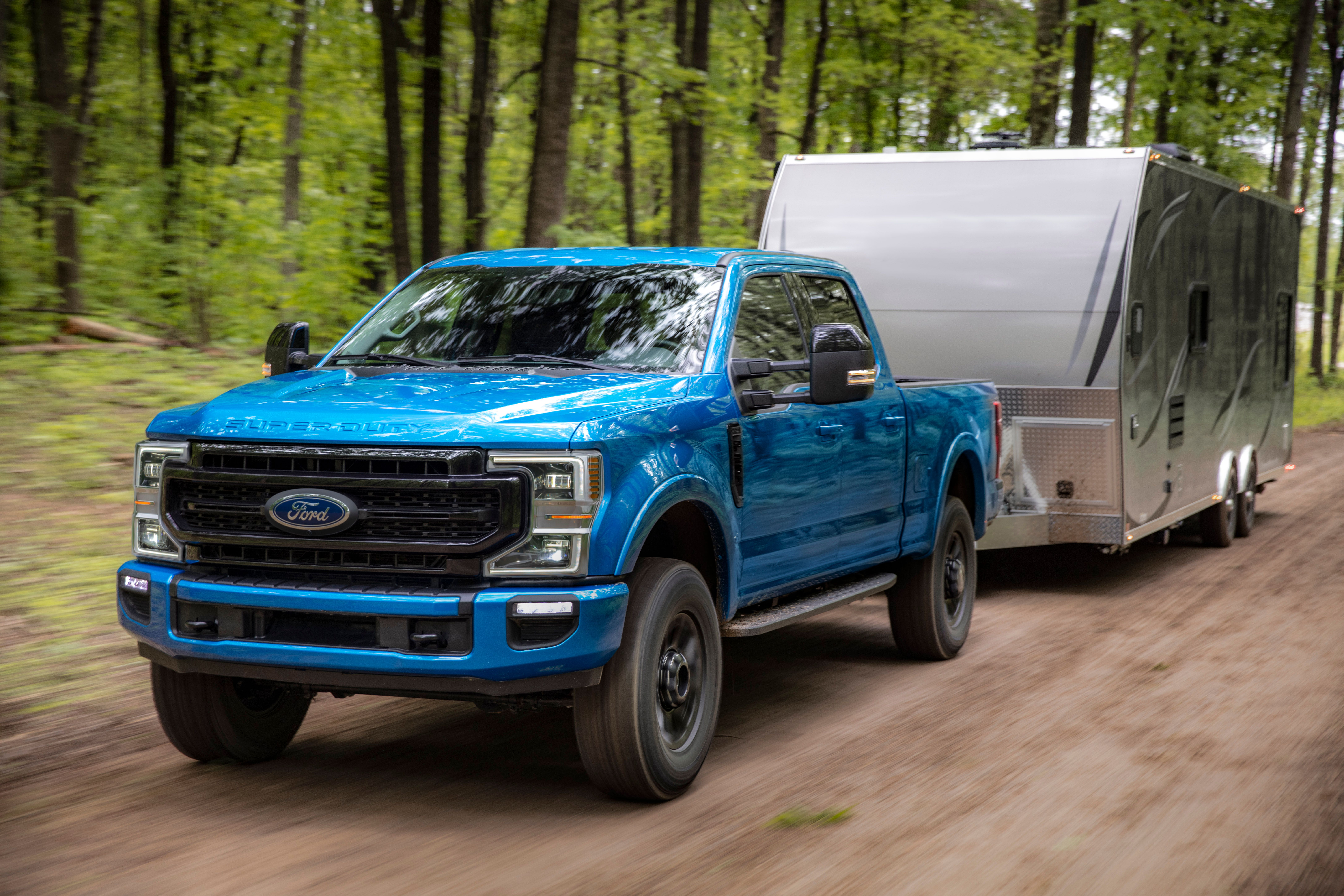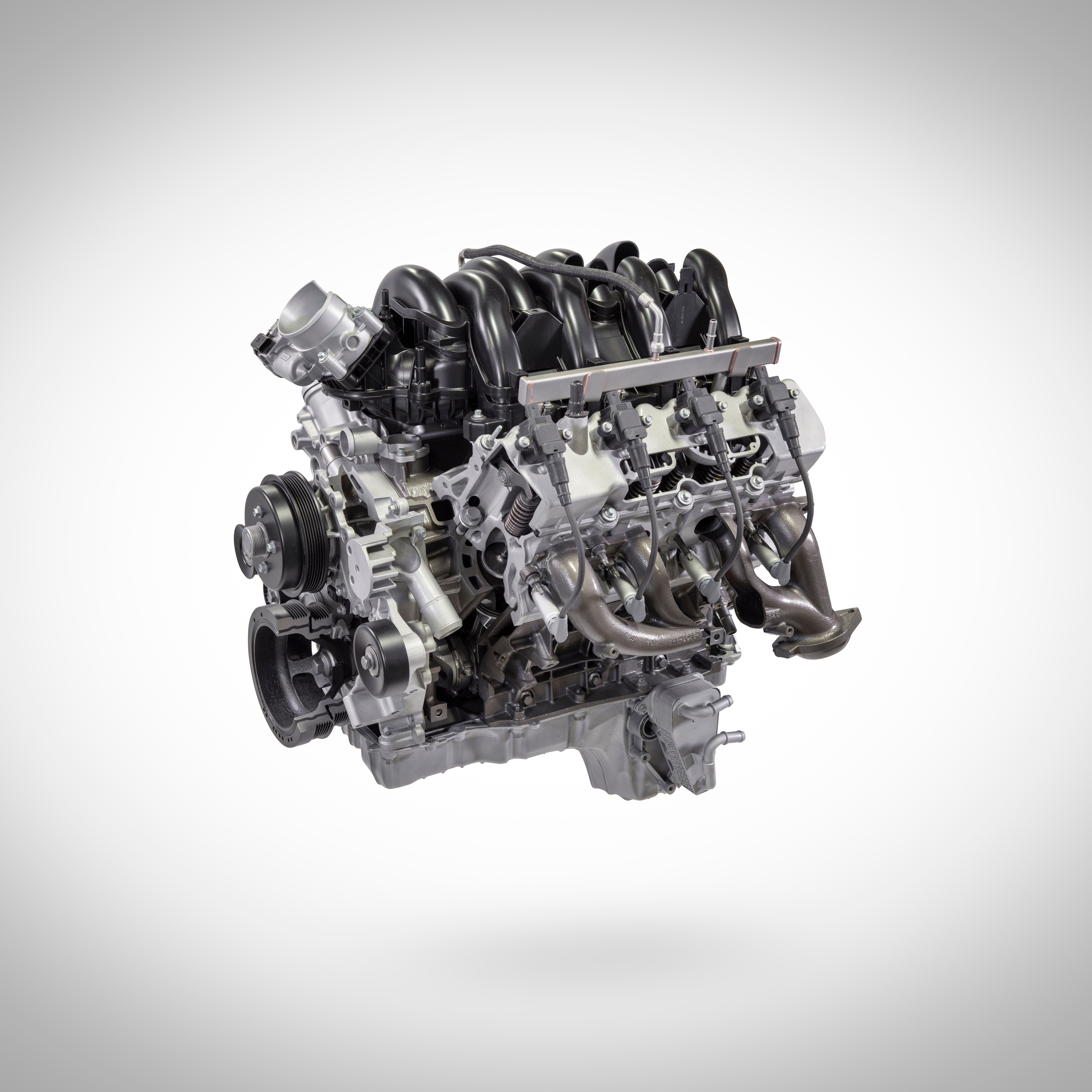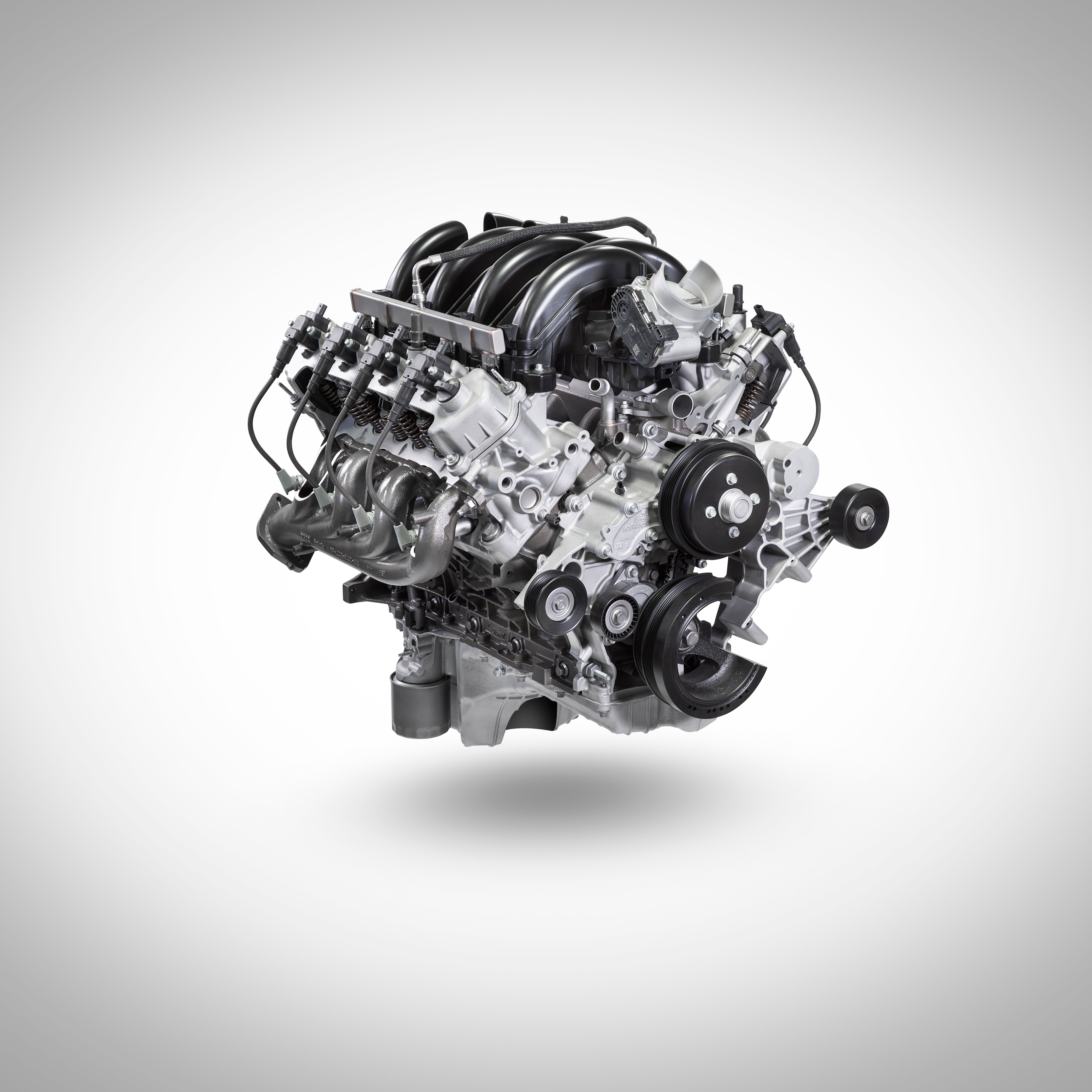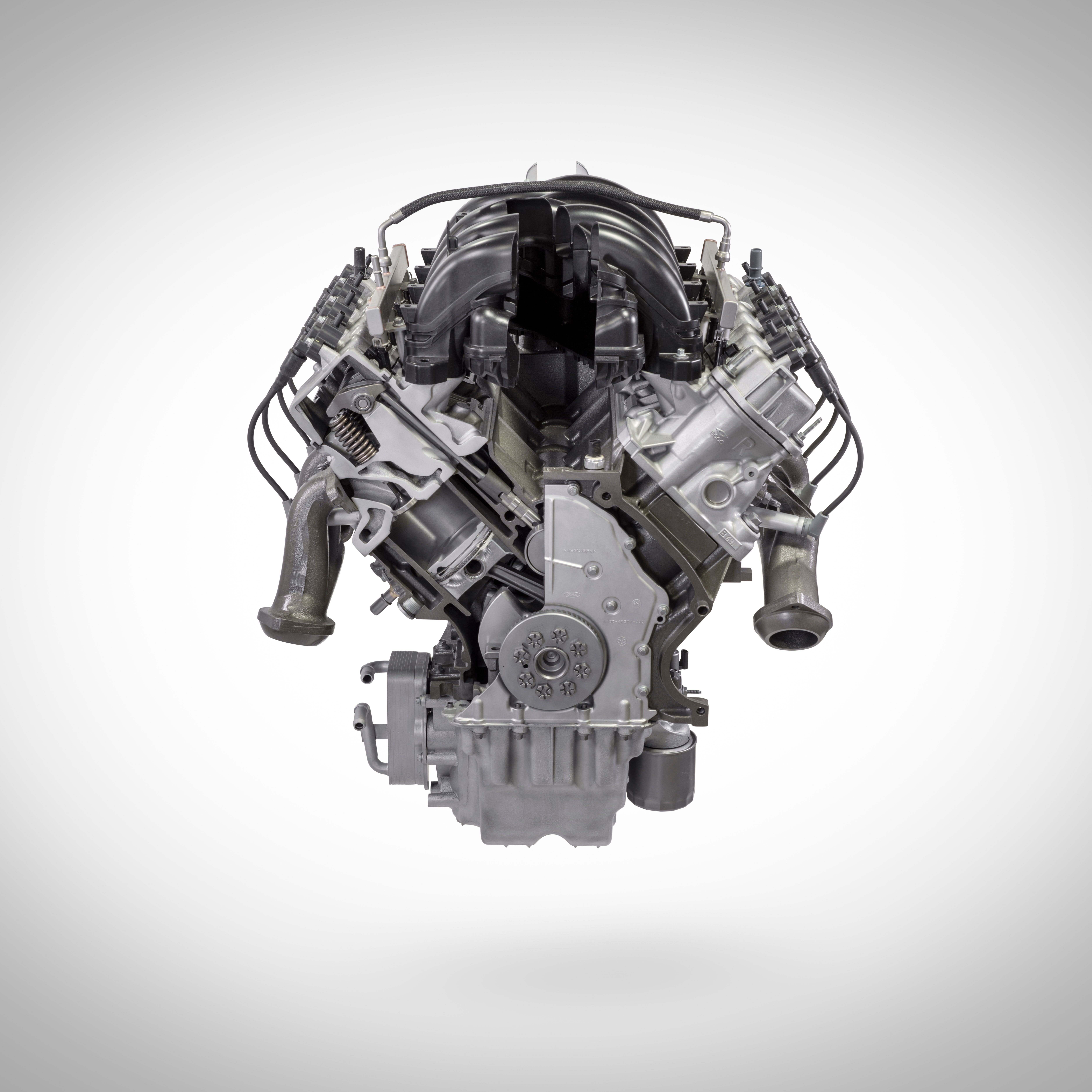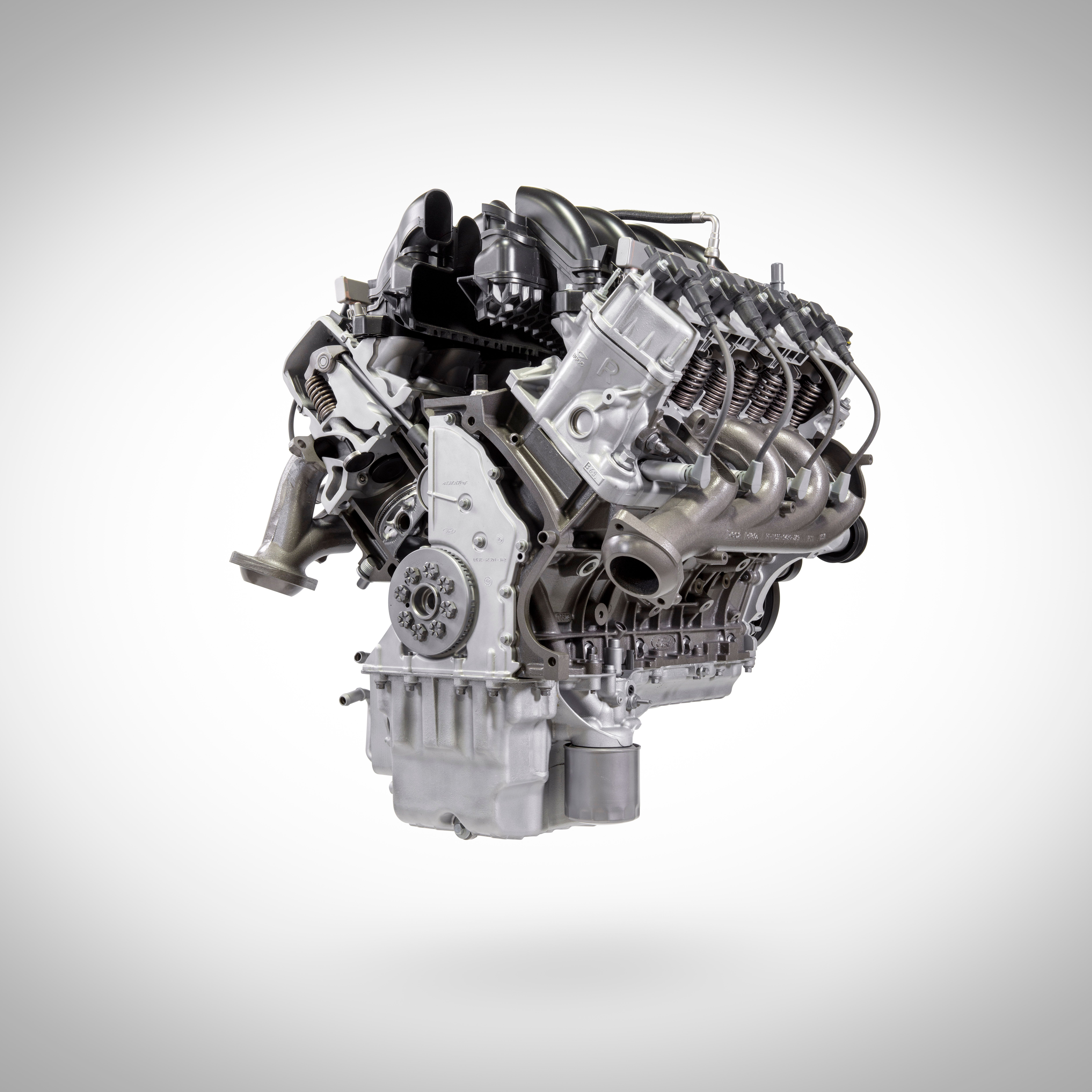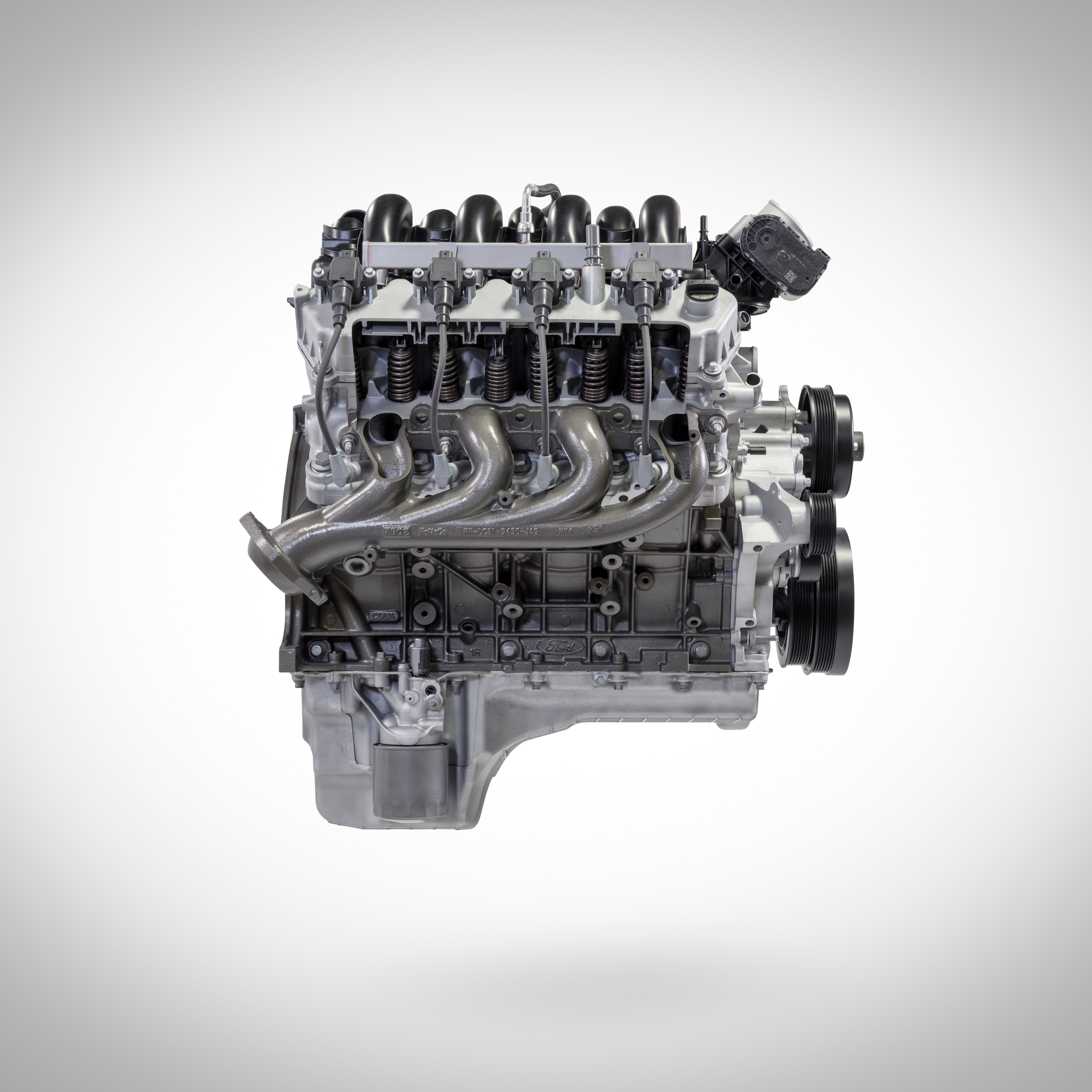With sedan sales going down and truck sales going up, automakers are shifting their focus on these big, brutish machines. All of them are trying to snatch a share of the pie from Ford – a company that has been ruling the segment for over four decades. Being at the top, Ford is under immense pressure to save its crown, and to be honest, the Blue Oval is actually doing quite well. From introducing the new Bronco, to unveiling the new electric F-150’s prowess, Ford has its hands full here. Amidst all this, the company revealed the all-new 7.3-liter V-8 engine that will make its way under the hood of the F-Series pickup truck. This is not a simple engine addition to the lineup. This new engine will don many hats and will help Ford get out of a lot of sticky wickets moving forward.
The Engine Specs Are Bang-On For Its Purpose
Ford announced the engine back in February 2019, but did not reveal any other details back then.
Ford did not mention if it has a cylinder-deactivation technology. Since it’s a high displacement mill and runs on gasoline, the engine will be guzzling fuel like a thirsty camel in a desert. A technology like this would help save fuel under lighter loads and deliver more miles per gallon. This new engine also features a variable-displacement oil pump that provides more oil when the truck is driven under tough, stressful conditions. When you are carrying a light load, the engine reduces the flow accordingly.
|
Horsepower |
430 HP |
350 HP |
|---|---|---|
|
Torque |
475 LB-FT |
468 LB-FT |
There’s More To It Than Meets The Eye
If you folks were expecting a higher power output, you will be disappointed. But, I think this is a very wise move from Ford. Firstly, this is a naturally-aspirated engine, not a turbocharged mill. The biggest advantage of naturally-aspirated engines is that they are a lot more their reliable than their turbocharged or supercharged counterparts.
It Looks Like This Engine Will Replace The V-8 Coyote
We have heard a lot of rumors and speculations about Ford retiring the 5.0-liter V-8 Coyote engine. It has been serving Ford for a long time now, and Ford plans to put it to rest.
|
Horsepower |
430 HP |
760 HP |
|---|---|---|
|
Torque |
475 LB-FT |
625 LB-FT |
Ford Might Plonk It In Other Vehicles As Well
Ford will be bringing the new 2021 F-150 next year. There are high chances that this engine, in a detuned state, will trickle down here from the Super Duty series. The Blue Oval will most likely take a call on this seeing the demand for a V-8 engine in the F-150. Given how competitive the market has gotten lately, Ford wouldn’t want to leave a vacuum and let other automakers take advantage of this.
Nice Way To ‘Dodge’ The Electrification Questions
The trucking segment is witnessing a lot of action lately. Even the ‘unorthodox’ electric trucks are making the headlines, and people were waiting for an answer from Ford regarding this.
How Will It Fare Against Rival V-8s?
Before we compare these engine, let me tell you that I’m taking only the gasoline engines into consideration. We’ll talk about the high-flying, four-digit torque figure engines some other time. Ram offers the 5.7-liter, V-8 engine on its trucks as well, albeit in different states of tune. In case of the Ram 1500, the engine churns out 395 horses and 410 pound-feet of torque and is married to an eight-speed automatic transmission. In case of the Heavy Duty Ram trucks, it produces 383 horses and 400 pound-feet of torque, and power is sent to the wheels via a six-speed automatic gearbox. The Ram 3500 comes with a 6.4-liter, heavy-duty V-8 Hemi engine that makes 410 horses and 429 pound-feet of torque. Power is sent to the wheels via an eight-speed automatic gearbox.
Let’s compare this with Ford’s new V-8 engine. If you look at it, Ram clearly holds an advantage for offering multiple V-8 engines on its trucks. But Ford’s 7.3-liter “well-balanced” engine can be pitted against either of them and still come out as a winner - on paper at least. Ford holds an uncanny advantage here because it churns out a lot more horses and torque, and is also mated to a 10-speed gearbox, unlike Ram’s six-speed transmission. The extra gears create a shorter gear ratio, thus allowing to play a lot more freely with the horses and torque available at your disposal. If you believe in the ‘no replacement for displacement’ philosophy, the Ford mill holds the advantage here as well.
The Chevy Silverado is, more or less, in the same boat as Ram's pickup trucks when it comes to V-8s. The 2019 Silverado comes with a 5.3-liter, V-8 engine that produces 355 ponies and 383 pound-feet of torque. However, it is offered with a choice of two transmissions – a six-speed automatic and an eight-speed automatic gearbox. The other mill is a 6.2-liter, V-8 engine that churns out 420 horses and 460 pound-feet of torque. This is a lot closer to the power outputs of Ford’s new 7.3-liter, V-8 engine, and is mated to a fantastic 10-speed automatic gearbox.
What They Had To Say
A spokesperson from Ford said “the focus for the 7.3-liter was total capability as delivered in vehicle. We have class-leading peak torque, but we valued capability from 1,500 rpm on up over obtaining an even larger advertised peak torque. All versions of the 7.3-liter are capable of delivering over 400 pound-feet of torque from 1,500 rpm on up. We believe this large amount of torque from low engine speeds is exactly what a heavily loaded vehicle needs for good drivability.”
Final Thoughts
I believe Ford has perfectly timed the launch of this engine. Now, it all depends on how much premium the company will charge for it. Being a new engine, common sense would dictate it will be a hefty premium. But, given how competitive the market has become now and the volumes Ford manages to sell, it shouldn’t be a deal-breaking increase. However, the engine will be an absolute fuel-guzzler. If you were in the market for a V-8 engine, gasoline-powered truck, which one would you pick? Share your thoughts in the comments section below.
Further reading
2020 F-Series Super Duty Promises to Offer Highest Towing and Payload Ratings
Read our full review on the 2019 Ford F-150.

